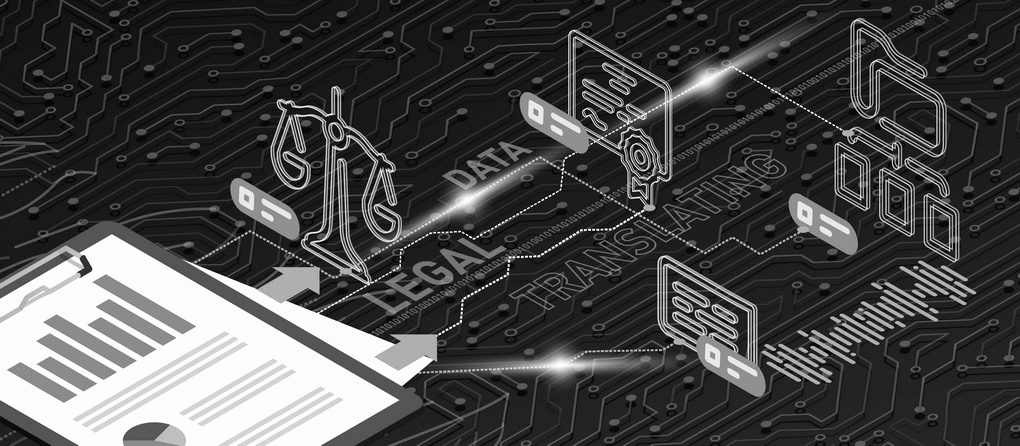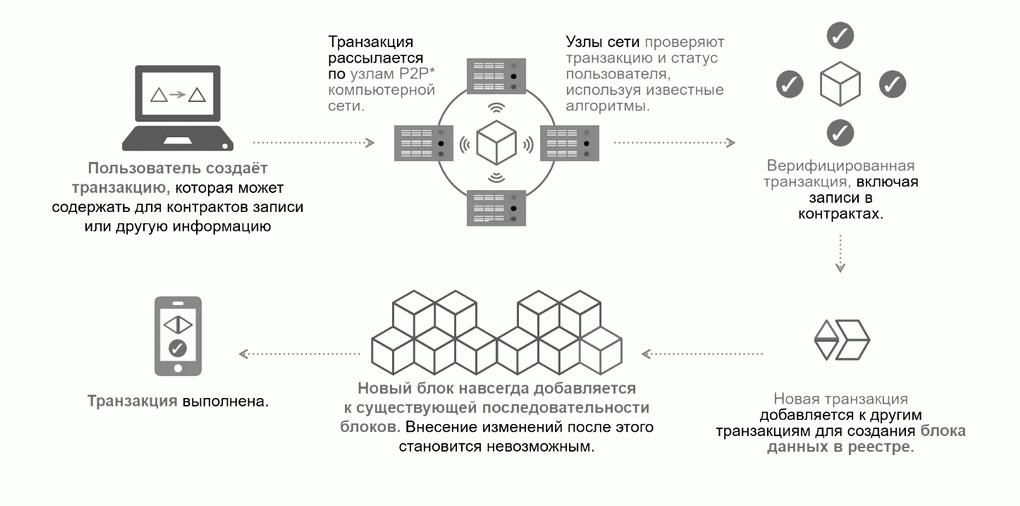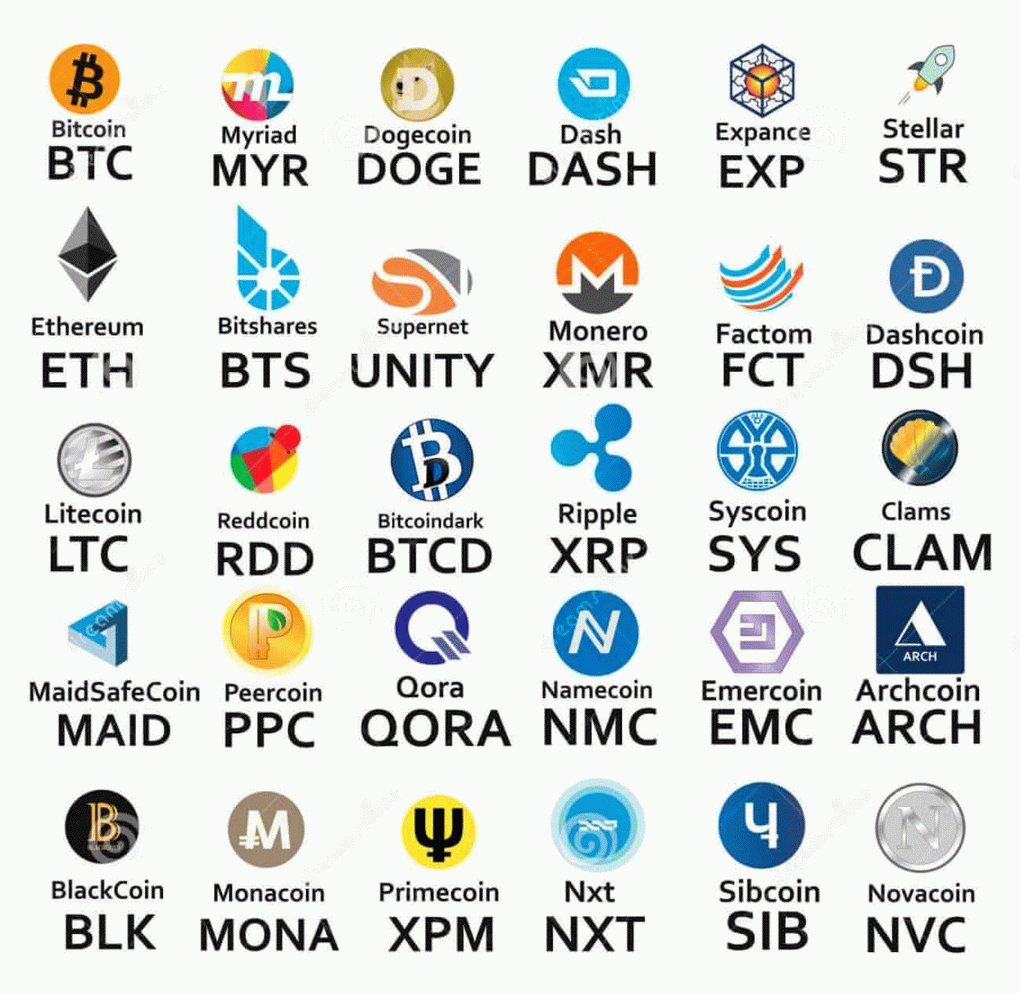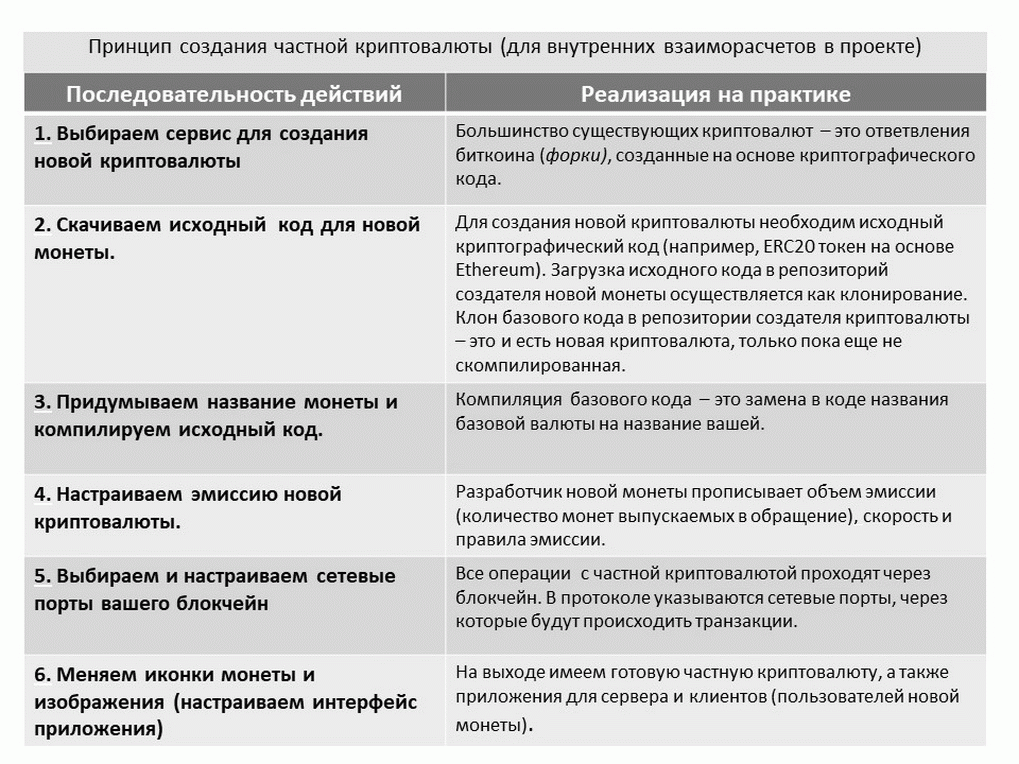Introduction
In the publications of various experts in the field of information technology and futurology, we constantly read about the fourth industrial revolution (Industry 4.0) and the transition to the sixth technological order. Of course, all these optimistic forecasts relate to developed countries, but there are speeches about “digital transformation” and “knowledge economy” at the highest level in Russia and the CIS countries. What changes need to be prepared for in the coming decade, both ordinary citizens and IT professionals? What technologies will be basic in the 6th order?
Industry 4.0

Futurologists identify several basic trends in the IT field (virtual and augmented reality, 3D printing, artificial intelligence, etc.), but among them they are confidently leading:
- blockchain and smart contracts;
- private cryptocurrencies.
In the eyes of the average layman, the concept of Blockchain is inextricably linked with mining, bitcoin and cryptocurrency exchanges. In fact, blockchain technology is a distributed ledger protected from unauthorized access, in which any transactions are recorded in a peer-to-peer network (it can be both public and closed).
In this publication, we will try to explain how completely new models of work can be built on the basis of blockchain in the legal and financial spheres, as well as in the public administration system.
In the first part, we will give an understanding of LegalTech and LawTech, and in the second part we will briefly tell you how you can create your own cryptocurrency and what it is for.
In principle, all these technologies are already available now, so their introduction into the mass sector is a matter of the near future.
How will blockchain, smart contracts and LegalTech change the legal profession?
Let's start with the fact that modern jurisprudence has become a very complex and "opaque" occupation even for professional lawyers, not to mention ordinary people in the street. Literally every month, new laws, regulations, bylaws, regulatory requirements, etc. are issued. It is not easy even for a professional lawyer to understand all this; for ordinary citizens, qualified legal assistance becomes expensive and sometimes even ineffective. How will these problems be solved with the help of the "digital transformation" of the legal sphere, and how can blockchain help us?
In the last decade, two interesting directions for digitalization of jurisprudence have emerged in the field of IT - LegalTech and LawTech.
LegalTech (English legal technology)- an innovative business sector that serves as an information technology service for legal professionals. Rather, LegalTech is created for lawyers, attorneys and other legal professionals and focuses on providing lawyers with the following solutions:
- software in the field of information security and cloud solutions;
- electronic document management systems (EDMS);
- specialized software for solving basic legal problems (databases of legal documents, help systems and resources, etc.).
LawTech solutions are focused on the ordinary user of legal services and represent various web services, applications, websites and portals that help an ordinary citizen to get legal assistance quickly and independently.
In principle, software products of this class already exist now. However, the use of blockchain, artificial intelligence (AI), as well as semantics and ontology methods opens up wide opportunities for a qualitative change in LegalTech and LawTech during the transition to the 6th technological order.
The idea is to use machine learning and AI systems, the next generation EDMS to move to structured documents that can be read and processed not only by humans, but also by machines. Such solutions are implemented using markup languages (XML, RDF, etc.), and documents prepared in such languages are available for processing by special robotic programs.
LegalTech and LawTech solutions.

At the next stage, we connect the blockchain to these software solutions. Thus, the document, certified with an electronic signature, will be placed in the block of the decentralized register. This is the guarantor of the legal action performed (for example, what agreement the parties came to as a result of the transaction, the timestamp indicates the point in time when this agreement was concluded).
Perhaps, as such technologies develop, there will be no need for the document itself, a record that is legally significant and timestamped will be placed in the decentralized register (blockchain). Already today, some simple legal issues can be safely transferred to the blockchain: (real estate trade, voting in elections, insurance programs, etc.). Instead of paper contracts and agreements, it is much easier and safer to fix such transactions using smart contracts written in special programming languages that implement legal actions in blockchain technology.
The mathematical description of the "smart contract" is reduced to the construction of an algorithm of the form "if ... then ...". Today, smart contracts are drawn up by programmers and are still available only for the implementation of typical legal actions (registration of real estate, simple purchase and sale transactions, etc.).
A correctly drawn up "smart contract" will be executed in a special computer environment, the participation of the parties is no longer required for this. The most common platforms for developing blockchain projects are Etherium, IBM Bluemix. In the future, smart contracts can be drawn up by lawyers themselves, without the help of IT specialists. With the expanded implementation of IoT technologies, it will be possible to transfer to smart contracts and a wider class of transactions and contracts (for example, complex deliveries of products using logistics, etc.).
How blockchain technology works.

Private cryptocurrencies for organizing internal settlements in complex projects.
In the previous part, we described how using blockchain and smart contracts it will be possible to transform the legal sphere and automate the preparation and implementation of standard transactions and contracts. But here the financial part of the deal remains behind the scenes.
How will financial settlements be carried out between counterparties in the project, especially if the project is complex and multi-stage?
What if the project is being implemented within a single closed system (a corporation with many departments, a large website that provides various services to users, a specialized startup, etc.)?
There is a traditional option using fiat money, banking system, non-cash payments and loans. But as always, this option carries a large bureaucratic component; moreover, centralized financial institutions (banks, etc.) take their interest for services and considerable ones. There is a variant of using well-known cryptocurrencies (bitcoin, ethereum, monero, etc.), but such financial instruments are very volatile and are often used for speculative purposes.
Some types of existing cryptocurrencies.

The most suitable way for internal settlements in startups, corporate IT projects, in large web and mobile applications (especially in the gaming industry) is to create your own cryptocurrency. Yes, cryptocurrency is created not only for the sake of ICO and making money on the growth or fall of the exchange rate on the exchanges, but also for purely practical purposes. Below are all the steps that are required to generate your own coin, especially since forks based on Bitcoin and Ethereum are freely available, including on GitHub.
- We decide on a service to create our own cryptocurrency (for example, a fork on GitHub).
- We find and upload a suitable cryptographic code (for example, it can be an ERC20 token based on Ethereum).
- We name our cryptocurrency and edit the source code in the way we need.
- () . ( ), , .
- ( , ).
- , . .
Creation of a private cryptocurrency (working algorithm).

Here are all the steps. It should be noted that to create and promote your own cryptocurrency, you will need to assemble a team of professionals: programmers, designers, marketers and financiers. There are also ready-made projects with the help of which you can start issuing your cryptocurrency with minimal effort and cost.
Example of a standard ERC20 token code

conclusions
All technologies described in the article are available for implementation today.
Startups and R&D companies work in the field of LegalTech and LawTech, ready-made smart contracts can be found in the Ethereum project and edited to fit your needs.
Cryptocurrencies have been around for over 10 years, and many varieties of coins have been issued, however, you can find more useful use for "private money" than speculation on cryptocurrency exchanges and online settlements between individuals.
There are many web projects that issue their coins to carry out internal settlements between users of their own services; the developments of such a plan are also known in the real sector (for example, the use of smart contracts and their own cryptocurrencies for projects in the field of building houses and selling real estate).
Thus, blockchain and cryptocurrencies are gradually entering the life and work of an ordinary user, bringing us all closer to the sixth technological order.